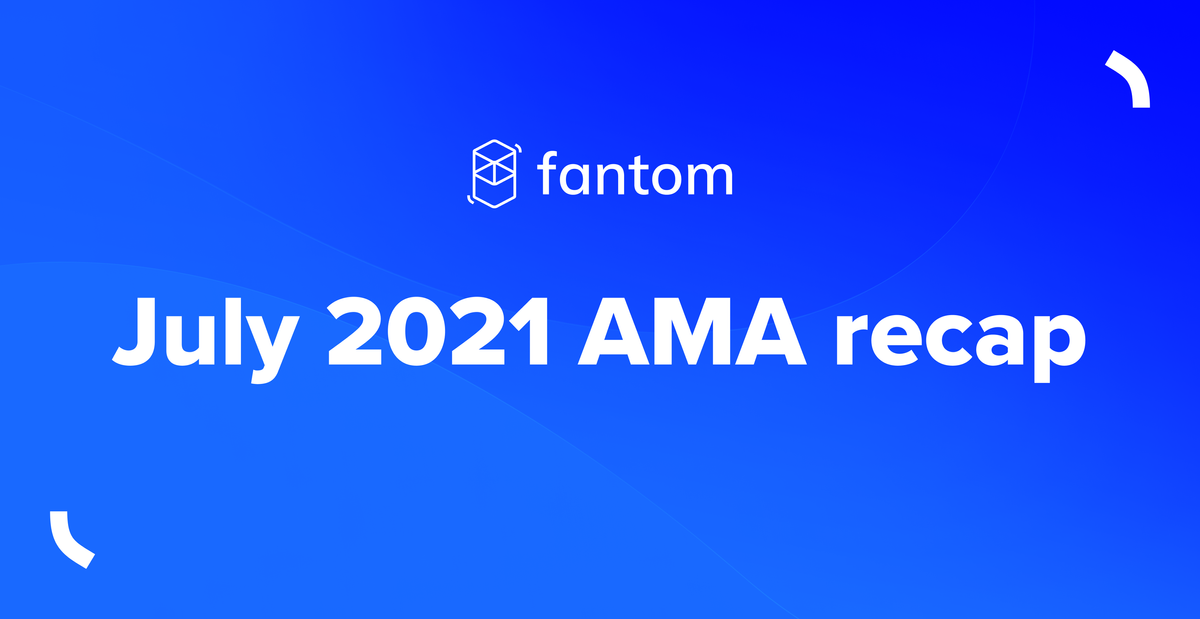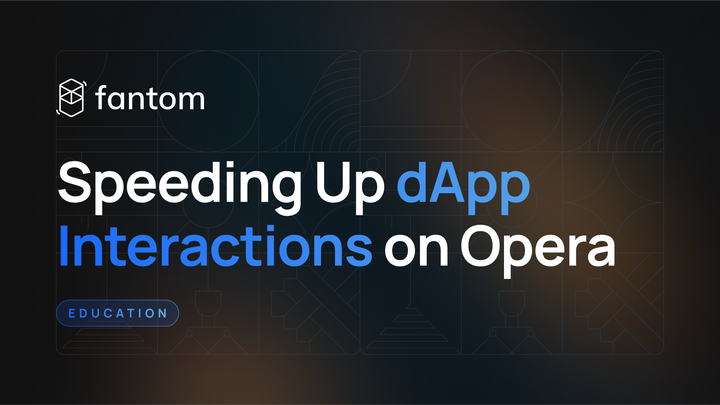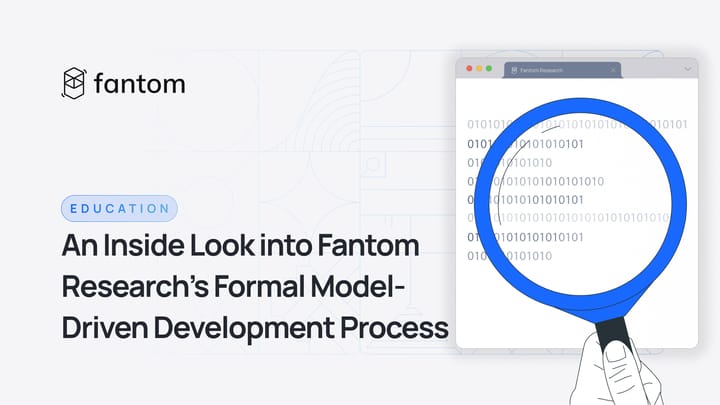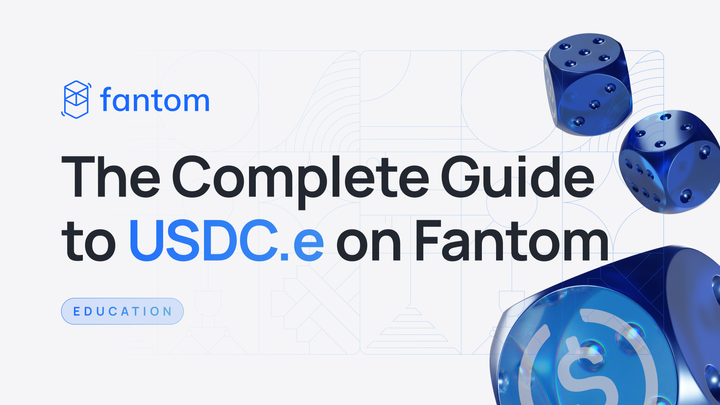July 2021 AMA recap

On July 8, 2021, FTM Alerts hosted a livestream with Fantom team members Michael Kong (CEO), Samuel Harcourt (Director of Business Development), and John Morris (Director of US Operations). Fantom community members submitted questions.
For those who couldn’t participate, here’s a short recap. Make sure to watch the lively interview, which covered a lot of ground!
- What's the team solution to the RPC issues, and can we expect it to be resolved permanently at any point soon?
- What are the team's plans to make room for more validators? What's the optimum validator count, in your opinion?
- fUSD is the Fantom native stable coin that you can mint through the fWallet by locking FTM. Is there any news on the future of fUSD?
- What are the incentives to continue staking FTM when all the coins reserved for staking rewards are spent? What type of runway is left on the actual staking rewards as it sits right now?
- How can the FTM token capture value from the government partnerships in the long term? Where do you see blockchain-as-a-service and the public network aligning?
- What have you been working on? (Sam Harcourt)
- What have you been working on? (John Morris)
- With the ability to bridge USDC and fUSDT over, what value does fUSD bring, especially because fUSD is currently underpegged?
- Can you say anything about the hints dropped about the Afghanistan Stock Exchange?
- What excites you the most about Fantom right now?
- Which DeFi project are you most interested in right now? How do you feel about the network and the dApps on it?
- We know that ChainLink is on testnet and that it’s a necessary addition to Fantom for many projects to move over. Any idea when we might see ChainLink going live on-chain?
- What is your opinion about the Fantom Community? It seems to be one in which there is a lot of collaboration to grow the ecosystem.
- Do you ever read our Discord chats, and do we ever manage to make you laugh?
- Are there any plans for you to lower the barrier for new people trying to buy FTM and convert it to Opera mainnet? New exchanges seem to be adding the ERC20 Fantom before they are willing to add mainnet FTM.
- Are there any community resources that you support, like FantomDigital?
- What are your outreach and marketing plans to encourage the adoption of the Fantom Opera network? Do you have different strategies for different regions?
- What is the status of the Fantom virtual machine? Is it going to be similar to Ethereum-flavored web assembly?
- What is the timeframe for the Fantom Virtual Machine?
- Will the crypto crackdown in China affect any Fantom partnerships - in Afghanistan, for example?
- What are the upcoming big changes to the Fantom ecosystem that developers and users can anticipate?
- What happens to Fantom projects in Kabul and Afghanistan if the Taliban ends up taking power? Does that have any effect on what we're doing there?
- How many governments are either piloting or using Fantom technology?
- Do you get a different reception from emerging economies than you would from maybe a more developed nation?
- There were great ideas that emerged from the Covalent Hackathon that SpiritSwap sponsored. Are there any new hackathons being planned for the near future?
- What is the timeline to activate all the features of the DeFi Suite?
- Is there any chance of having a Fantom weekly podcast?
- Is there anything we did not address?
1. What's the team solution to the RPC issues, and can we expect it to be resolved permanently at any point soon?
We are taking three significant steps to address it:
- We are getting different pro node providers like ANKR on board.
- The recent issue was a data center issue. We are diversifying by adding servers across data centers.
- One of our developers is working on an intelligent routing solution between servers.
We want 100% uptime and are working towards it.
2. What are the team's plans to make room for more validators? What's the optimum validator count, in your opinion?
There is no specific right or wrong number of validators:
1) We think that the minimum amount to run a node should be decreased to about half a million FTM, which will encourage people with smaller stacks to run their nodes.
2) We also need to continue to grow and attract new users.
3) Encouraging exchanges to run validator nodes is also important.
4) We would be happy with nodes in the hundreds. We can optimize the protocol to handle more validators with little degradation.
3. fUSD is the Fantom native stable coin that you can mint through the fWallet by locking FTM. Is there any news on the future of fUSD?
We are actively working on fUSD stabilization. We’re adding in a few more features to make it like a MakerDAO-style rules system. We’re adding in liquidations, auctions, and more. We have also added a few more developers to the team who are focusing on fUSD.
4. What are the incentives to continue staking FTM when all the coins reserved for staking rewards are spent? What type of runway is left on the actual staking rewards as it sits right now?
One way to address it is to reduce emissions over time. Other solutions are about trying to get as many users on the platform and increasing network transactions. We have a two to three-year runway on staking rewards.
5. How can the FTM token capture value from the government partnerships in the long term? Where do you see blockchain-as-a-service and the public network aligning?
We think of the Fantom ecosystem as having two parts. The decentralized, open-source part deals with applications like DeFi and other use cases like on Ethereum. The other side is Fantom enterprise, where we work on projects like CBDCs and Supply Chain Tracking. For some enterprise solutions, hashes are verified on-chain, bringing activity to the blockchain.
6. What have you been working on? (Sam Harcourt)
Fantom has a two-pronged approach - blockchain development and enterprise development. I work on enterprise development, pitching Fantom, and connecting legacy systems to new frameworks for the digital economy.
For enterprise situations, we have two areas of focus. The first is business applications that use immutable databases for blockchain-based ERPs, supply chain tracking, and DHR (digital health records).
The second area of focus is the traditional banking world and the incorporation of programmable blockchains into traditional payment rails. We are heavily researching CBDCs and SGGs (Smart Global Exchanges) at the moment.
7. What have you been working on? (John Morris)
Beyond bringing Fantom to exchanges, it has been important to address OTC desks, market makers, institutions, and institutional custodians to raise awareness about Fantom.
8. With the ability to bridge USDC and fUSDT over, what value does fUSD bring, especially because fUSD is currently underpegged?
Stabilizing fUSD will be done through liquidations or a better ratio. DAI, USDT, fUSDT, and the few other stablecoins that you’re able to run on Fantom are not native stable coins. There are risks associated with bridged assets. With fUSD as a native stablecoin, we have only to worry about risks on our network.
9. Can you say anything about the hints dropped about the Afghanistan Stock Exchange?
The idea behind working with a stock exchange is the same as for a smart global exchange. The idea is to tap the equity market for the crypto market and to combine them. It’s a long-term goal.
10. What excites you the most about Fantom right now?
Mike: The incredible support of the community and the consensus technology.
Sam: Working with the Fantom team.
John: The fervor to innovate in the Fantom team and ecosystem.
11. Which DeFi project are you most interested in right now? How do you feel about the network and the dApps on it?
Both the native Fantom projects and Ethereum projects building on Fantom are important. That Fantom is an entirely EVM-compatible chain makes it easy to deploy with a few tweaks. Developers don’t need to rewrite an entire codebase in a different language.
12. We know that ChainLink is on testnet and that it’s a necessary addition to Fantom for many projects to move over. Any idea when we might see ChainLink going live on-chain?
When they’re already making it publicly available on the testnet, you can be confident that it is coming soon. Many projects use ChainLink and are eager for it to go live on Fantom.
13. What is your opinion about the Fantom Community? It seems to be one in which there is a lot of collaboration to grow the ecosystem.
Michael: The community has rallied behind Fantom. I want to repay the community by growing this project as big as it can get.
John: Everyone is trying to help each other out, and that's unique from my perspective.
14. Do you ever read our Discord chats, and do we ever manage to make you laugh?
Definitely! Both the Discord chats and Fantom Marines (on Telegram) make us laugh.
15. Are there any plans for you to lower the barrier for new people trying to buy FTM and convert it to Opera mainnet? New exchanges seem to be adding the ERC20 Fantom before they are willing to add mainnet FTM.
Our objective is to make Opera available and to make it easy for users to on-ramp. Exchanges are the common path, but we are working on other ideas to enable users to access traditional fiat on-ramps.
16. Are there any community resources that you support, like FantomDigital?
For us, those resources and discussions happen on Discord, Reddit, and Telegram. We sincerely appreciate the work community members have done to create landscapes and ecosystem graphs.
17. What are your outreach and marketing plans to encourage the adoption of the Fantom Opera network? Do you have different strategies for different regions?
There are a few strategies. One is the sponsorship of well-known individuals like Pierre Gasly and (Valentino) Rossi. Another approach is social media posting and marketing that drives organic growth. A third approach is paid outreach. Marketing also depends on the general climate in the cryptocurrency market. We want to capitalize when there is broad bullish sentiment.
18. What is the status of the Fantom Virtual Machine? Is it going to be similar to Ethereum-flavored web assembly?
It’s quite different from web assembly. Two forthcoming technical papers will outline our approach. The first will address a novel way of storing smart contract data. The second will address our efficient, Solidity-compatible virtual machine interpreter.
19. What is the timeframe for the Fantom Virtual Machine?
A time frame of a couple of years is broadly accurate at this point.
20. Will the crypto crackdown in China affect any Fantom partnerships - in Afghanistan, for example?
It is possible, but also note that China is conducting a CBDC pilot. Our goal is to continue to demonstrate to emerging and developed nations the capacity of our technologies and to cement our strong track record.
21. What are the upcoming big changes to the Fantom ecosystem that developers and users can anticipate?
One is improving consensus storage for Fantom for greater efficiency. The other is ecosystem growth and the onboarding of providers who will offer developers more tools to build applications on Fantom.
22. What happens to Fantom projects in Kabul and Afghanistan if the Taliban ends up taking power? Does that have any effect on what we're doing there?
It would force us to pause our development there. But we are diversifying across Asia. Of course, it would be unfortunate, since those we work with in Afghanistan are incredibly open, but it would not set back business development.
23. How many governments are either piloting or using Fantom technology?
We are exploring enterprise and payment-rails solutions with multiple nations. We plan to demonstrate global value by integrating our technology in the developing world.
24. Do you get a different reception from emerging economies than you would from maybe a more developed nation?
Many first-world nations are satisfied with their systems. But the emerging nations are hungry to grow, and they want to prove themselves, so this is a way they can do that by leapfrogging and leveraging Fantom’s technology to push ahead in GDP terms.
25. There were great ideas that emerged from the Covalent Hackathon that SpiritSwap helped sponsor. Are there any new hackathons being planned for the near future?
The Covalent Hackathon saw many quality and creative submissions. We were happy to sponsor that alongside SpiritSwap and Covalent was great to work with. We’ll be looking to get more done in the future.
26. What is the timeline to activate all the features of the DeFi Suite?
There is so much to come. We want to aggregate all DeFi functionality into one wallet. Our focus is on user experience and making it easy for all users to take advantage of our offerings.
27. Is there any chance of having a senior member of the Fantom team offer a weekly podcast?
We look forward to arranging more AMAs and interacting with the community.
28. Is there anything we did not address?
The Foundation will soon be launching a new, user-friendly NFT platform on which many wonderful artists are participating.



